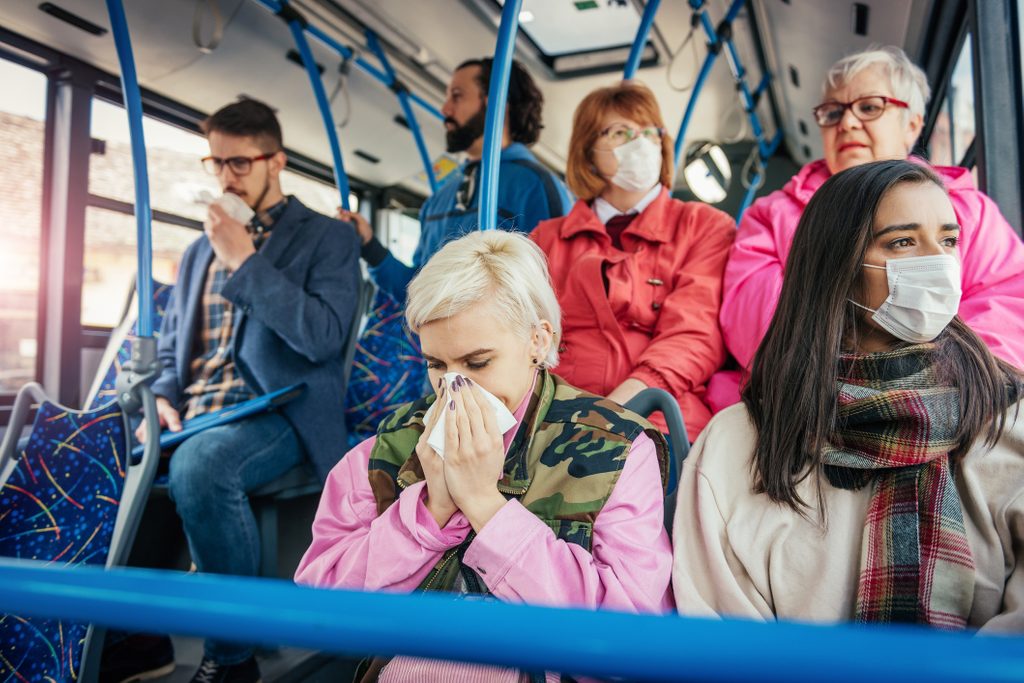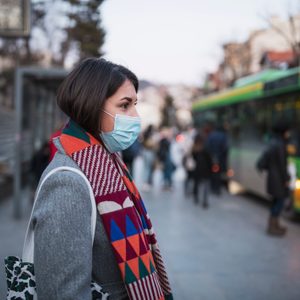What SARS, MERS, and Covid-19 Have in Common

The new coronavirus is the third to have jumped from animals to humans in the 21st century. Here's what we can learn from the previous two.
The new coronavirus is believed to have first jumped from animals to humans around December 2019 at a seafood market in the city of Wuhan in Hubei province, China. As some point, people began spreading the virus to other people, sparking a chain of community transmission that continues to grow day by day.
Because of the particular characteristics of this new virus and the miracle of modern international travel, it has crossed multiple borders and oceans to land in dozens of countries, infecting more than 170,000 people and killing more than 6,700 in just a few months. The illness caused by this new coronavirus—called Covid-19—has sickened 373 people so far in Canada, causing 1 death.
Covid-19 is actually the third disease caused by a coronavirus that jumped from animals to humans in modern times, says Nestor Sosa, MD, chief of infectious diseases at the University of New Mexico School of Medicine in Albuquerque. SARS (severe acute respiratory syndrome) was the first, circulating in 2003. The second was MERS (Middle East respiratory syndrome), which originated in Saudi Arabia in 2012.
Here’s what we know about these modern viruses, how they have spread, and how public health systems have responded.
A family of viruses that can also cause the common cold
SARS, MERS, and Covid-19 are all infections caused by members of a group of viruses called coronaviruses.
“Coronaviruses are a family of viruses which can cause a variety of diseases in humans and animals, typically respiratory illnesses in humans,” explains says S. Wesley Long, MD, PhD, assistant professor of pathology and genomic medicine at Houston Methodist Hospital. Four different coronaviruses cause up to a third of all cases of the common cold, he adds.
Coronaviruses typically reside in animals such as bats, pigs, and camels. The MERS, SARS, and Covid-19 viruses all appear to be related specifically to coronaviruses found in bats, says Dr. Long.
Viruses that have never before been known to infect humans typically are more virulent, meaning they are more likely to make people sick. “When they make the jump to humans, our preexisting immunity is low,” explains Eric Cioe-Pena, MD, director of global health at Northwell Health in New Hyde Park, New York. “As human beings, we have never seen Covid-19 before and our immune system can’t react.” (These are the coronavirus symptoms you need to watch out for.)
Related but different
Like members of any extended family, MERS, SARS, and Covid-19 also have different personalities that affect how they behave in public.
Covid-19 is transmitted between humans much more efficiently than either SARS or MERS, which helps explain why it has travelled so much faster than its two modern predecessors. “This ease of transmission has also made Covid-19 more difficult to contain and resulted in a more global spread,” says Dr. Long.
The SARS virus, which also originated in a market in China, infected a total of 8,098 people in 29 countries, killing 774, according to the World Health Organization. The MERS virus infected 2,442 people and killed 842, according to a 2019 study in Emerging Infectious Diseases. Both SARS and MERS have essentially died out. (Although the MERS virus is thought to still circulate in camels.) In just three months, the Covid-19 virus has surpassed both the SARS and MERS viruses in transmissibility and mortality, with no sign of subsiding.
(Psst: You might want to check out these immune-boosting tips that may help keep you from getting sick.)
The presence of “superspreaders”
According to Dr. Sosa, we have not seen Covid-19 superspreaders (animals and people who can spread the virus more efficiently) to the same degree as we did with SARS. In that epidemic, there were people who single-handedly infected 10 or 15 people. “They had huge amounts of the virus,” he says.
Scientists are also teasing out the particulars of how MERS, SARS, and Covid-19 were transmitted. A 2004 study in the Lancet, shortly after the SARS epidemic, found that viral shedding (when the virus can be spread to other people) peaked 12 to 14 days after the illness began, and after patients were already in the hospital and somewhat contained. Covid-19 may be able to spread even before any symptoms appear.
What have we learned?
Any new epidemic will disrupt public health systems, no matter how sophisticated. There are just too many unknowns. But some of the lessons we learned from SARS and MERS have proven valuable.
For instance, Chinese authorities notified the World Health Organization within four weeks of identifying the first patient, according to a February 2020 study in the European Journal of Immunology. By contrast, it took four months for officials to alert the WHO about SARS. Thanks to SARS and MERS, new pathogens are more quickly identified and sequenced, the study authors point out. Chinese scientists had the genomic sequence of the new virus publicly available soon after the outbreak was announced. (This nurse working in Wuhan shared her story of infection, quarantine, and her boyfriend’s death due to the disease.)
Unfortunately, developing enough tests and a strategy for who should be tested has proved more problematic. Covid-19 is moving so fast that public health officials are struggling to keep testing guidelines up to date. Also: While researchers are making progress toward a vaccine, we’re at least a year away from having one ready for public use.
Some of the most basic strategies are still the most effective, points out Anthony Fauci, MD, head of the National Institute of Allergy and Infectious Diseases, in an editorial in the New England Journal of Medicine: Isolating sick patients at home, closing schools, asking people to telecommute, and limiting travel can help slow the spread. The bottom line is that it’s best to avoid panic—you should self-quarantine if you suspect you may be ill, and learn how best to protect yourself from the virus.







